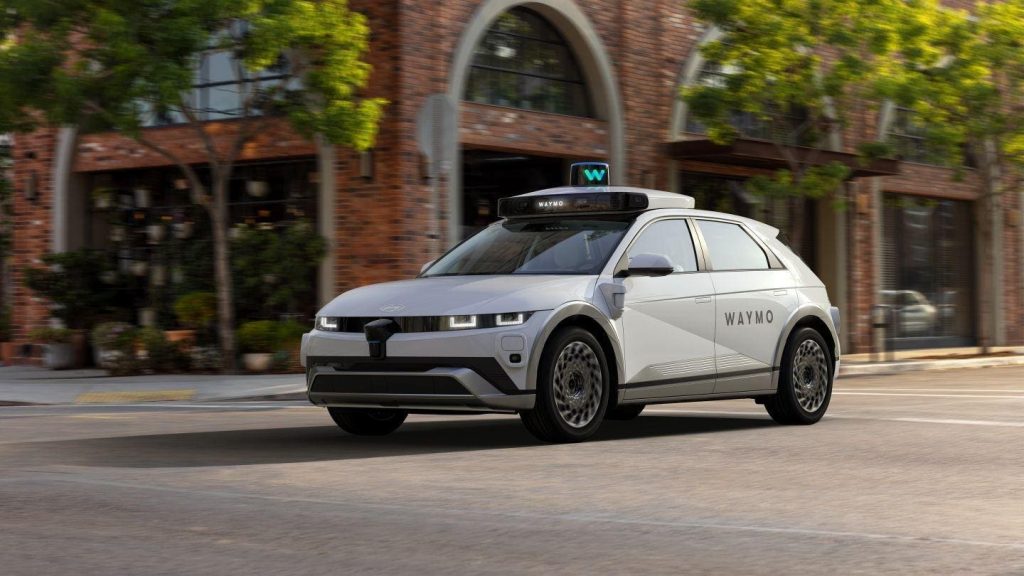Waymo announced today that they had closed a $5.6 billion funding round, with most of the funding coming from parent Alphabet, but also from several leading investors. The commitment from Alphabet was announced earlier. As a unit of one of the world’s wealthiest companies, you might imagine Waymo has the fewest money worries of any of the robotaxi companies, but there is always effort to raise money.
Waymo reports this money will help them bring the Waymo service to more customers, with expansion in their existing cities and into more cities. While no robotaxi service is yet in a mature production state with high growth, once that state is attained, buying the vehicles themselves becomes the single largest cost of operating the robotaxi fleet. It’s an interesting question of where that large amount of capital comes from. Companies like Alphabet, Amazon and General Motors—the three leading robotaxi players in the USA—are flush with capital, but the amounts needed are truly huge.
With a custom Robotaxi design, like that of the Amazon Zoox, the shelved GM Cruise Origin, or the Tesla Cybercab, there is an issue. If the vehicle fails, or even goes obsolete too soon, it has very little value. There’s really nobody else who can buy it, let alone will buy it. That means the vehicles must be bought with investment capital, or once profitable, with profits. There are always better uses for that sort of money.
This creates an unexpected attraction for robotaxis that are based on existing car models, such as Waymo’s planned Ioniq 5, Cruise’s Chevy Bolt or Tesla’s hoped for self-driving Model 3 and Y. It becomes possible, if necessary, to resell them to ordinary customers if they fail.
Of course, nobody plans that their business to fall short, and fail or have too much inventory. They might worry that their vehicles could become obsolete before wearing out at worst. Every robotaxi firm is committed to success. Bankers, on the other hand, are not so convinced. If they know the vehicle has a resale value, they can accept it as collateral for a loan—in fact that’s something they do around a million times every week. If you can finance your fleet with debt, that frees up your investment capital and profits for other purposes (though of course you must service that debt.)
That means you want to design your vehicle so it can be converted back to a private car at a tolerable cost. For something like a current Waymo, that might involve a bit of body work or cover plates for the locations where the custom sensors are mounted. It would involve removing the special gear and computers, and possibly installing a steering wheel and pedals (if those were not already present.) This is doable, and even easier in a drive-by-wire design. The vehicle might look slightly funny, and it certainly cost more to build and unbuild than a standard car, so this happens at a loss, but there’s also a clear and predictable resale value for the result, and you can literally take that to the bank.
Tesla’s CyberCab could have controls added to it (Tesla said it will not be made with them in their earnings call earlier this week) but as a two-seater it might be hard to sell in the regular car market. Tesla would have a much easier time with robotaxis made from models 3 and Y with the steering removed—those cars are among the easiest to convert. Indeed, Tesla previously announced a plan to buy back all model 3/Y when their leases end and turn them into robotaxis, which was a very smart plan as they get to have somebody else eat a lot of the vehicle depreciation. Tesla also states that they want regular owners of these models to be able to hire them out via Tesla’s ride-hail network, which is definitely the cheapest and most risk-free way to finance a fleet, though it’s a business model that has not had much success. (Almost all AirBNB are not private homes hired out when not in use, and Turo and Getaround continue to be a very small part of the car rental market.)
Later, as the business matures, doubt will be removed, and it will be possible to use debt financing even on custom robotaxis, backed by the solid revenue stream of a vehicle. This will be the time for custom designs, like the Zoox, to shine. Zoox has made a big bet that their special design has advantages that will make it win in the market, but there isn’t yet a market to win. Custom vehicles will offer a better rider experience.
Waymo’s Zeekr based design, which may never take off in the USA due to a planned 100% tariff on Chinese EVs, is still based on a regular consumer minivan Zeekr is selling in China. If those go into production they could also be debt financed, though resale in the USA is not practical.
Read the full article here






